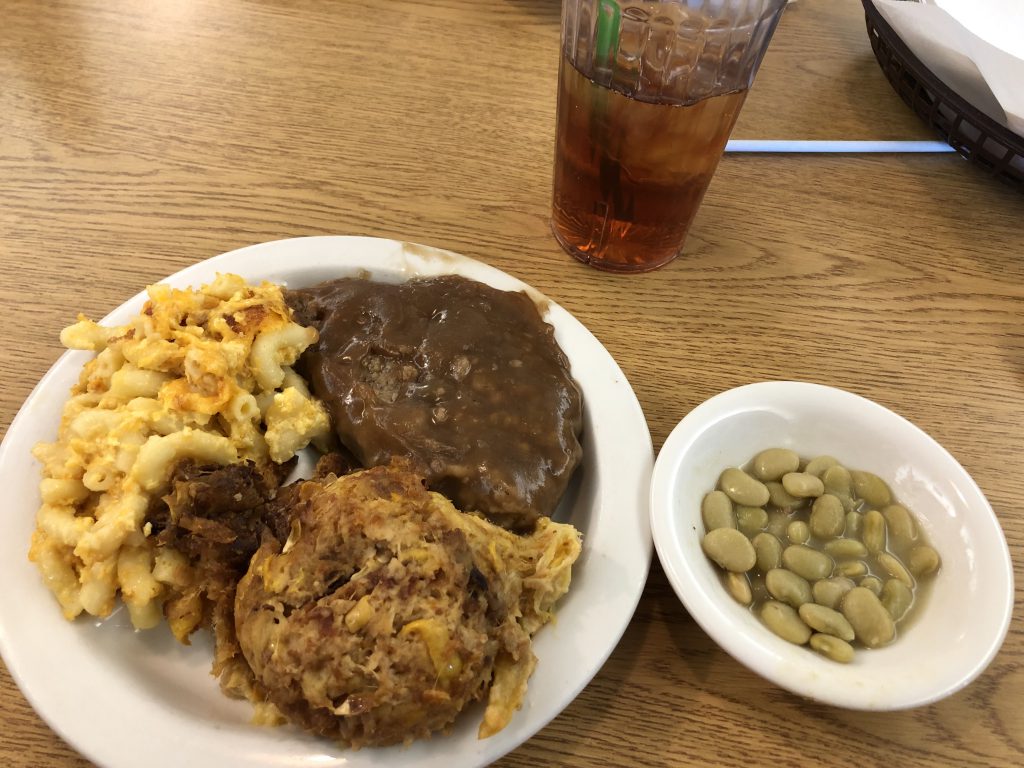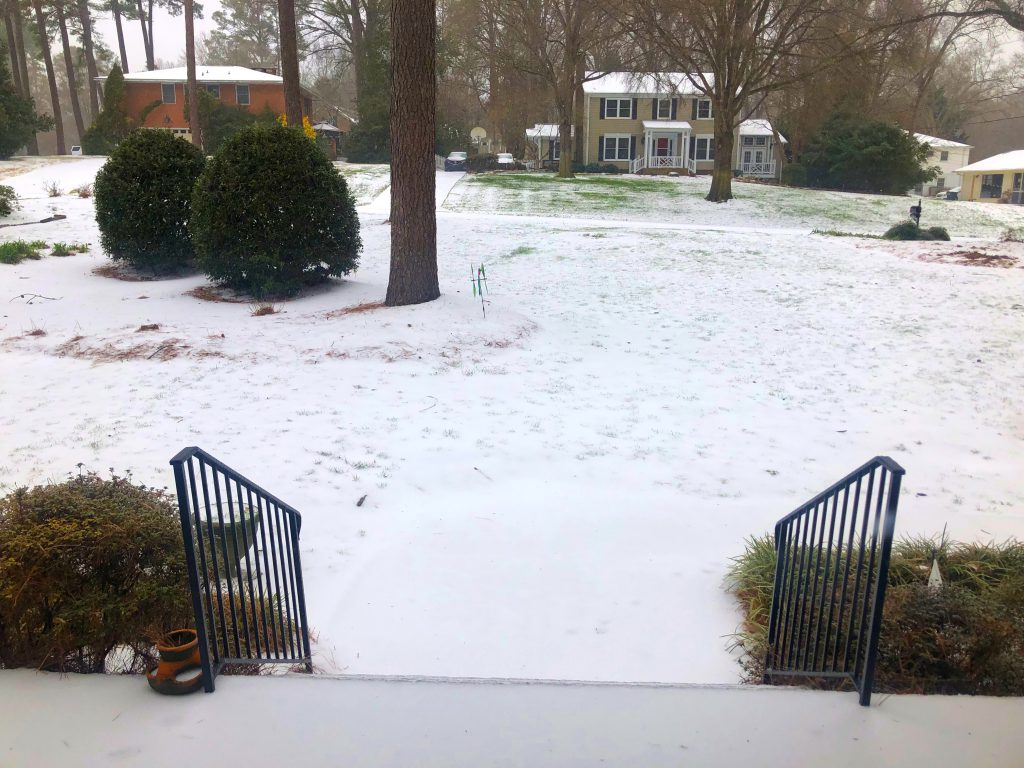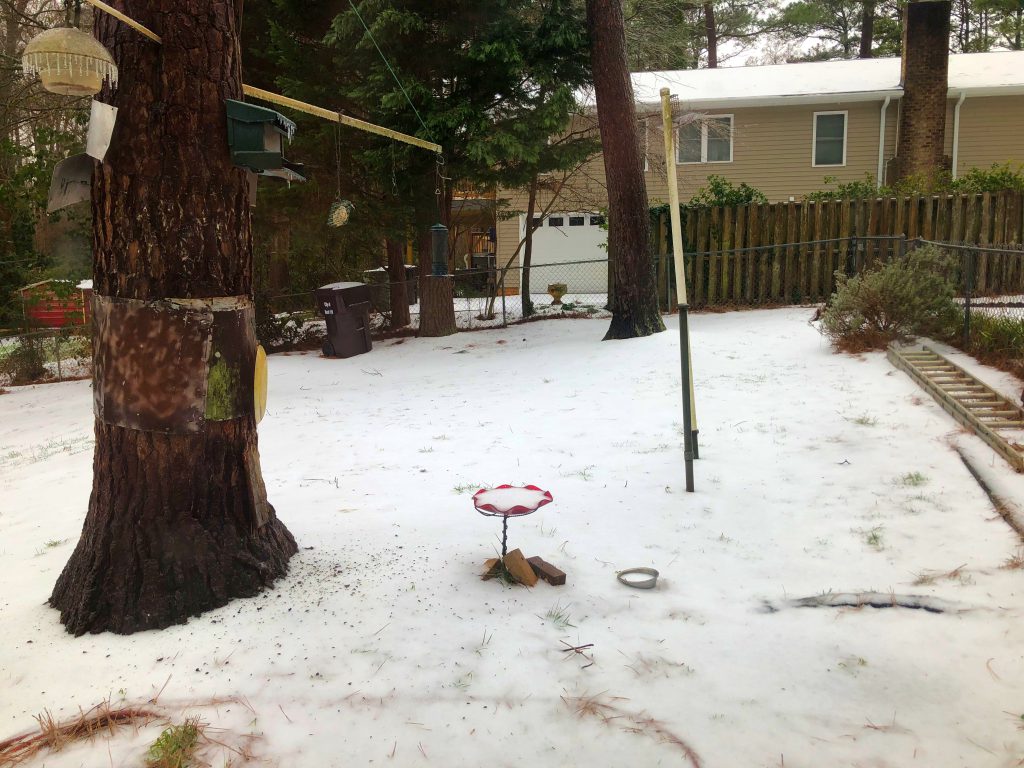Barbara suggested that I revive this blog and use it to provide updates on my health to family and friends. That is an excellent idea, and I’ll be writing those updates as time permits. But right now, I want to use the blog to provide an update on my status and Mom’s in the current winter storm. (I started writing this as an e-mail, but I realized it would work better as a blog post.)
After Aunt Carol’s visitation, the other Berrys all were safely at home by Friday evening. But my plan was to drive Mom and Pete home on Friday, spend the weekend at her house, and then drive home on Sunday afternoon.
Well, Sunday is here, and ain’t nobody goin’ nowhere.
We drove back to Rock Hill as planned on Friday. Since the route took us through the Columbia area, we stopped at a Lizard’s Thicket for lunch. That was mostly because I never pass up a chance to eat at the Thicket, but also because I wanted to introduce Mom to it. I figured she would like it, and I was right. (She is now lamenting the lack of a Thicket in Rock Hill.) I had country fried steak, mac & cheese, squash casserole, lima beans, cornbread, and sweet tea. Everything was delicious, of course.

We got back to Rock Hill without incident on Friday afternoon and unloaded our stuff from my car. We were both tired, so after a light supper, we both went to bed early. (I had thought I might try to get some work done Friday evening, but postponed that to the next day.)
It wasn’t until Saturday morning that I became aware of the predictions of a major winter storm on Sunday. At that point, I had two options. I could either cut my visit to Rock Hill short and head back to Cary on Saturday. Or I could stay in Rock Hill with the understanding that I would have to delay my return for a day or two. I chose the second option. I had originally planned to visit Rock Hill for Christmas weekend, but I had to cancel those plans because of my illness. This was my second chance to spend a weekend with Mom, and I wasn’t going to give it up if I didn’t have to.
Being forced to extend my stay in Rock Hill did not present much of a problem. I have my work laptop with me, so I can work from Mom’s house as easily as from anywhere else. I’m on multiple medications following my hospital stay, but I loaded up my pill minder last Wednesday before leaving home, so I have all the meds I need through the morning of Wednesday, January 19. As long as I get home by Wednesday evening, I won’t have to miss a dose of anything. I only packed clothes for four days, but Mom is doing laundry this morning and offered to toss in what was in my laundry bag, so that helps.
It also helps that Monday is a holiday for TE Connectivity, the company I work for. (I previously told Bob that it wasn’t but I had misread the list of holidays.) I still plan to do some work, but nobody will be expecting me to deliver anything or respond to e-mails until Tuesday.
On Saturday, we did some grocery shopping and made sure that we have everything we need to weather the storm. I found time to do some work. Then we went to El Cancun for dinner. Everything was delicious there as well, but you already know that if you’ve ever eaten there.
When we woke up Sunday morning, the ground was covered with sleet and snow.
So Mom and I are snowed in for a while, but we have everything we need. The biggest concern is the possibility of a power outage, but the house has two gas fireplaces with pilot lights (meaning that they don’t use electric igniters and will work without power). Even without electricity, we won’t freeze. As long as we do have power, I can work. And we have plenty of food. We’ll be fine.
Looking at the weather forecasts, I think I’ll be able to drive home on Tuesday or Wednesday. In the meantime, I’ll enjoy some extra time with Mom.
We lost power at 2:45 p.m. It was restored less than an hour and a half later, at 4:05 — not even long enough for the house to start feeling cold. Kudos to the Duke Energy repair crews for getting the power back on so quickly. Mom and I had a nice, quiet day, and I even got some work done.
The forecast says Monday will be clear and sunny, with temperatures above freezing from 10:00 a.m. until sunset. No precipitation, which means further power outages are unlikely. Some melting will probably occur, but what’s more important is that the clear and sunny weather will allow the SC Department of Transportation crews to clear the roads and apply salt and sand as needed. I may be able to drive home on Tuesday. We’ll see.
The roads were clear on Tuesday, and I was able to drive home without any difficulty.

